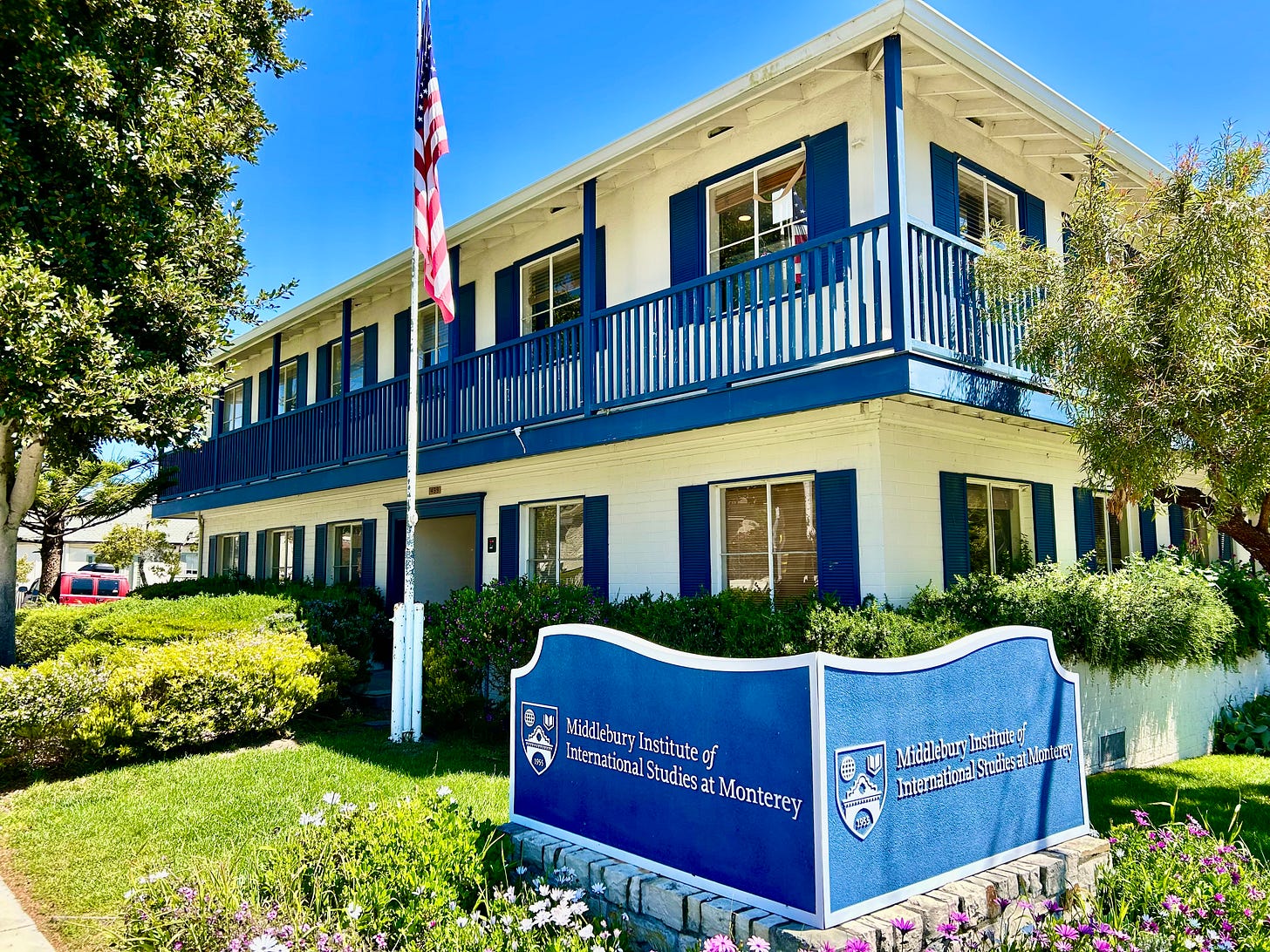On Utopias, Imperial Decline, and Monterey, California
Some of our treasured utopias will be washed away with imperial decline. But we can remember what made them magical as we imagine a new, post-imperialist world.
The Middlebury Institute of International Studies (MIIS) in Monterey, California just announced it’ll be more or less shutting down in 2027. Amid a blizzard of bad news befalling us in recent times, this leaves me with a distinct melancholy.
I have friends who make a living teaching at MIIS, so it’s personal in that way. But also no physical place has e…


